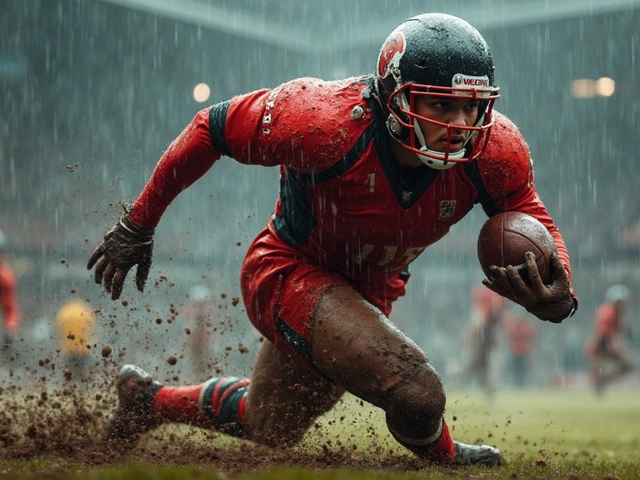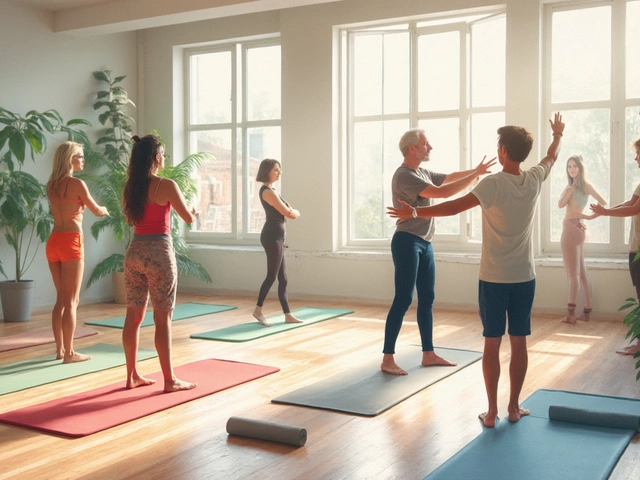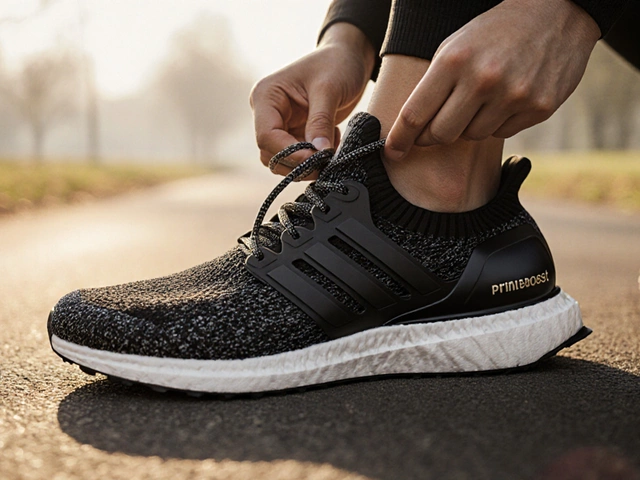The 7 Major Cycling Disciplines Explained
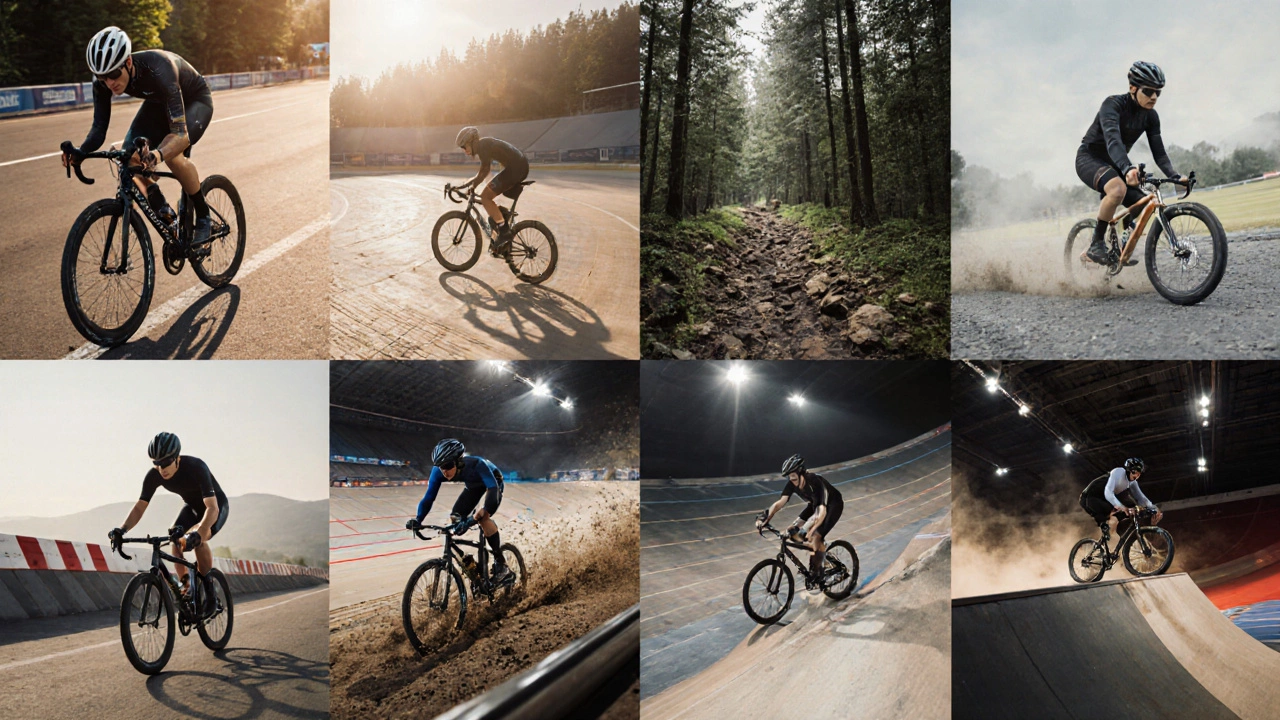
Cycling Discipline Selector
Find Your Perfect Cycling Discipline
Answer these questions to discover which cycling discipline matches your preferences.
How Does This Compare?
| Discipline | Best For | Key Skills | Typical Race Length | Community Vibe |
|---|---|---|---|---|
| Road | Endurance riders | Speed, aerodynamics | 50-350km | Group rides, club culture |
| Mountain | Trail enthusiasts | Technical handling | 2-100km | Trail communities, adventure |
| Track | Sprint specialists | Power, cadence control | 200m-4km | Velodrome clubs, precision |
| Cyclo-Cross | Seasonal riders | Transitions, agility | 30-60 min laps | Winter sport communities |
| BMX Racing | Speed seekers | Explosive power | 30-60 sec sprints | Olympic sports, competitive |
| BMX Freestyle | Creative riders | Balance, creativity | Trick runs | Skatepark communities |
| Gravel | Adventure cyclists | Mixed surface endurance | 50-300km | Exploratory groups, self-reliance |
Quick Summary
- Road cycling, mountain biking, track cycling, cyclo‑cross, BMX racing, BMX freestyle, and gravel riding are the seven most recognized cycling disciplines.
- Each discipline uses a purpose‑built bike, distinct terrain, and its own set of race formats.
- Pick a discipline that matches your fitness level, terrain you love, and the type of community you want to join.
- Key gear differences include frame material, tire width, and component geometry.
- Understanding the basics helps you choose the right bike, training plan, and events to target.
What are "cycling disciplines"?
When people talk about cycling disciplines, they are referring to the main categories of bike sport, each with its own rules, equipment, and cultural vibe. While the bike itself is a common thread, the way you ride - on smooth pavement, rugged trails, a velodrome, or a wooden ramp - creates very different experiences.
Road Cycling
Road cycling is the classic form of bike sport, raced on paved streets and highways. The bike features a lightweight aluminum or carbon frame, narrow high‑pressure tires, and drop handlebars for an aerodynamic position.
Typical events include single‑day classics, multi‑stage tours, and criterium races that sprint around city blocks. Training focuses on endurance rides, interval work, and group riding skills. Iconic races like the Tour de France and the Giro d'Italia have turned road cyclists into global stars.
Mountain Biking
Mountain biking takes the sport off‑road, tackling trails with rocks, roots, and steep climbs. Bikes use a sturdy steel, aluminum, or carbon frame, wide knobby tires, flat handlebars, and usually a front or full suspension system to absorb shocks.
There are sub‑categories such as Cross‑Country (XC), All‑Mountain (or Enduro), and Downhill, each with its own race format. A typical training week mixes technical skill sessions on a trail park with long endurance rides on fire‑roads.
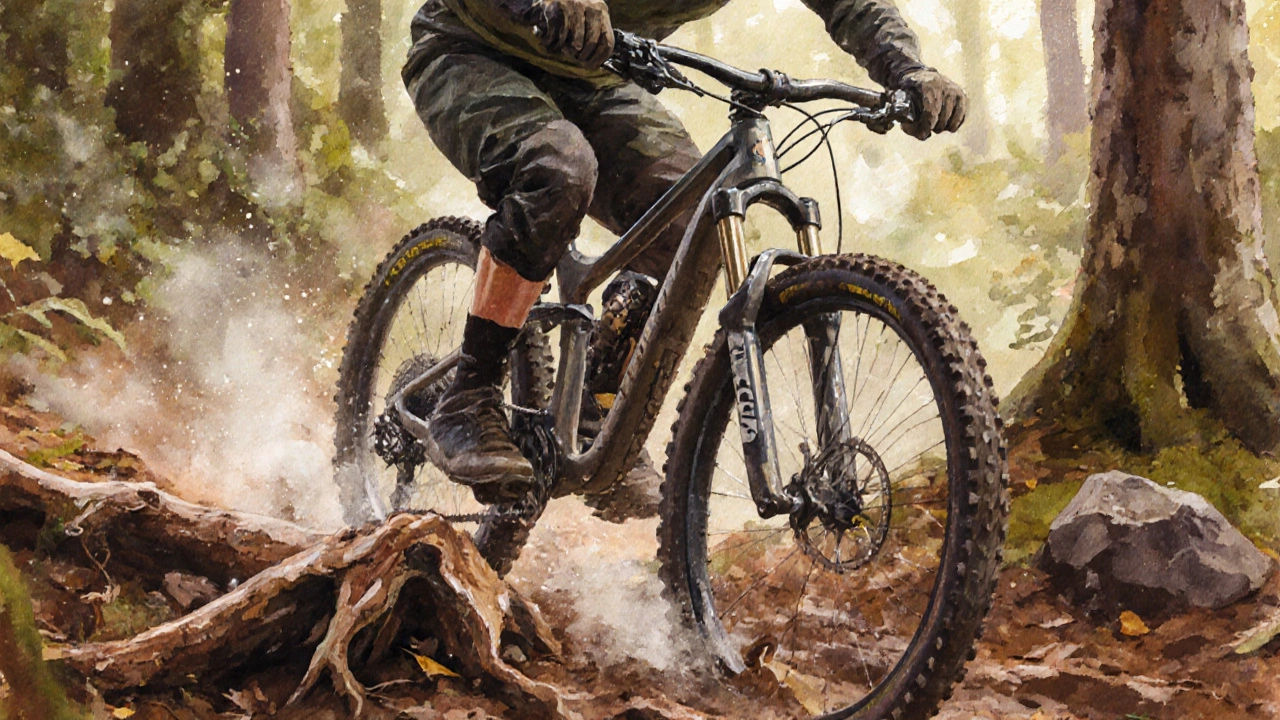
Track Cycling
Track cycling happens inside a velodrome - an oval track with steeply banked turns. The bikes are ultra‑light, have no brakes, a fixed‑gear drivetrain, and a single gear ratio.
Events range from short sprint battles to the grueling 4,000‑meter individual pursuit. Because the bike is fixed‑gear, riders must pedal continuously, which builds leg speed and power. Track clubs are common in cities with a velodrome, offering a controlled environment for skill development.
Cyclo‑cross
Cyclo‑cross blends road and off‑road riding, featuring short laps on mixed terrain - grass, mud, sand, and barriers that force riders to dismount and carry their bikes.
The bikes look like road machines but sport wider, treaded tires and higher bottom brackets to clear obstacles. Races usually last 30‑60 minutes and are held in the autumn and winter months, making them a great way to stay fit when the weather turns harsh.
BMX Racing
BMX racing is a high‑speed sprint on a short dirt track with jumps, banked turns, and rhythm sections. The bikes are small (20‑inch wheels), have a single gear, and no brakes, keeping weight to a minimum.
Races consist of 8‑16 riders lining up at the start gate, then sprinting for a lap or two. The sport is Olympic‑based, with riders often beginning in local leagues before moving to national circuits.
BMX Freestyle
BMX freestyle focuses on tricks performed on ramps, street obstacles, and flat ground. The bike shares many components with BMX racing but is designed for durability and control during aerial maneuvers.
Disciplines include Park, Street, Vert, and Flatland, each with its own competition format. Riders spend hours practicing jumps, grind rails, and balance tricks, turning the bike into an extension of their body.
Gravel Riding
Gravel riding sits between road and mountain biking, using bikes built for long‑distance rides on unpaved roads, fire‑roads, and light single‑track.
Gravel bikes blend the geometry of road machines with wider, tubeless‑ready tires (35‑45mm) and relaxed geometry for comfort over many hours. Popular events include the Unbound Gravel 200mi race and various “Strade Bianche”‑style courses.
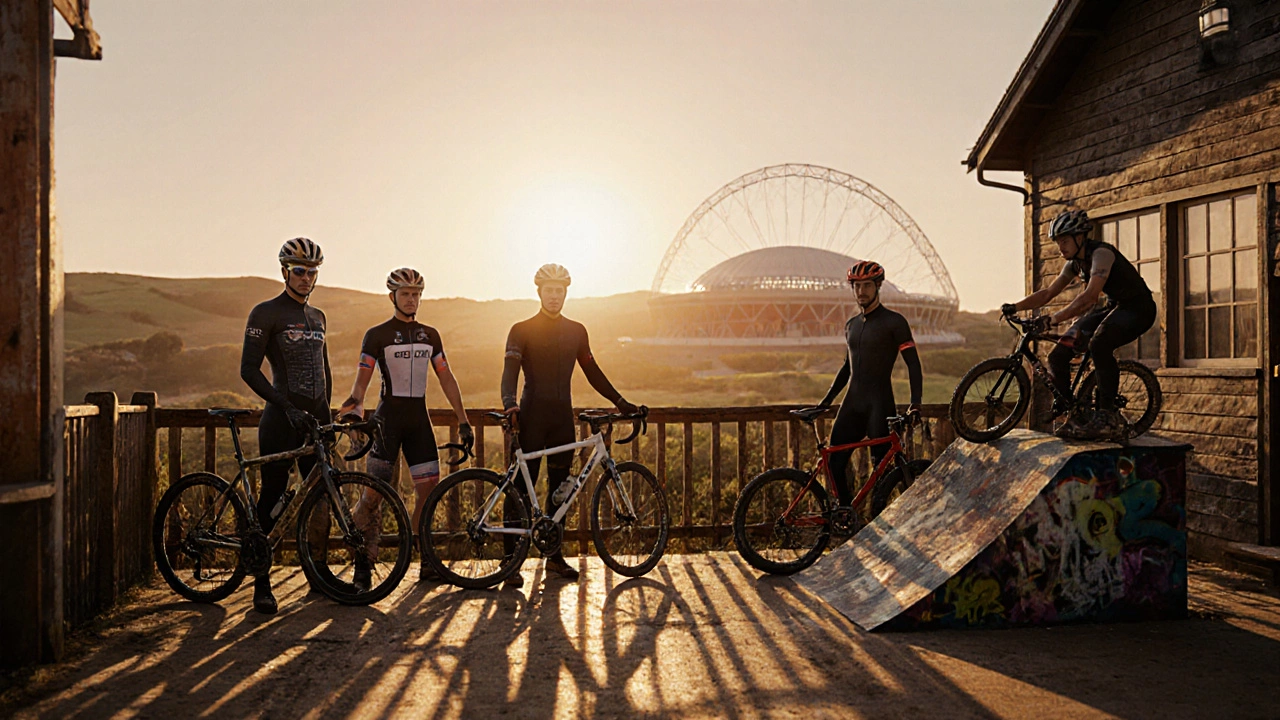
Choosing the Right Discipline
Not every bike feels right the first time you hop on. Ask yourself a few quick questions:
- Do you love speed on smooth pavement or the challenge of rough terrain?
- Are you after a social, low‑cost hobby or a high‑intensity competitive path?
- What kind of community do you want - a local club, a velodrome crew, or a skate‑park crew?
Once you answer these, match the terrain and bike type to your lifestyle. Many riders start with a road or mountain bike and later dabble in another discipline as their skills grow.
Side‑by‑Side Comparison
| Discipline | Typical Terrain | Bike Frame Material | Common Race Length | Main Skill Focus |
|---|---|---|---|---|
| Road | Paved roads, highways | Carbon or aluminum | 50km - 350km (stage races) | Endurance & aerodynamics |
| Mountain | Technical trails, single‑track | Aluminum, carbon, steel | 2km - 100km (cross‑country) | Technical handling & power |
| Track | Indoor velodrome | Carbon or steel, fixed‑gear | 200m - 4km (sprint to pursuit) | Speed & cadence control |
| Cyclo‑cross | Mixed terrain, obstacles | Aluminum, carbon | 30‑60min laps | Running‑bike transitions |
| BMX Racing | Dirt track with jumps | Steel or aluminum, 20‑inch wheels | 30‑60sec sprint | Explosive power |
| BMX Freestyle | Street, park, vert ramps | Reinforced steel, 20‑inch wheels | Trick runs (minutes) | Balance & creativity |
| Gravel | Unpaved roads, fire‑roads | Carbon or aluminum | 50km - 300km (ultramarathon) | Endurance on mixed surfaces |
Essential Gear Checklist Across Disciplines
- Helmet - always mandatory, choose a model that fits the discipline (aero helmet for road, full‑face for BMX freestyle).
- Bike‑specific shoes - clipless for road and gravel, flat‑pedal shoes for mountain and BMX.
- Gloves - padded for road, grip‑focused for mountain and BMX.
- Apparel - breathable kits for road/gravel, durable jerseys and padded shorts for mountain, tight-fitting kits for track.
- Tool kit - multi‑tool, spare tubes, CO₂ canister; essential for off‑road rides.
Frequently Asked Questions
Which cycling discipline is best for beginners?
Road cycling and mountain biking are the most beginner‑friendly. Road bikes are cheaper and easier to maintain, while mountain bikes let you stay on familiar local trails without dealing with traffic.
Do I need a different bike for each discipline?
Yes, each discipline optimizes geometry, components, and tire choices for its terrain. Trying to ride a road bike on a mountain trail, or a BMX bike on the highway, will make riding uncomfortable and unsafe.
Can I compete in more than one discipline?
Absolutely. Many athletes cross‑train - road cyclists do cyclo‑cross in winter, mountain bikers try gravel events, and BMX riders occasionally race on the track. Just make sure your bike setup matches the event.
How much does a decent bike cost for each discipline?
Entry‑level road bikes start around $900, mountain bikes $800, gravel bikes $1,100, track frames $700 (you’ll need a velodrome bike kit), cyclo‑cross $1,200, BMX racing $500, and BMX freestyle $600. Prices rise quickly with higher‑grade components.
Is there a season for each discipline?
Road and gravel races run year‑round but peak in spring/summer. Mountain biking thrives in spring‑fall. Cyclo‑cross is a fall‑winter sport. Track has a winter indoor season, while BMX racing and freestyle have events all year, often dependent on local venues.
Next Steps
1. Identify which terrain you enjoy most - city streets, forest trails, a velodrome, or a skate park.
2. Test‑ride a bike from that discipline at a local shop. Most shops let you try for an hour.
3. Join a club or online community; they’ll guide you on local events and sharpening skills.
4. Invest in the core gear listed above, then start a structured training plan (e.g., 3 rides a week, mixed intensity).
5. Sign up for a beginner‑friendly race or group ride. The first event is a great confidence booster and helps you see where you need improvement.

